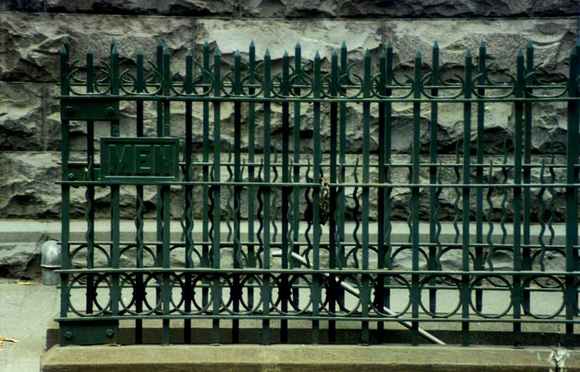| Back to search results » | Back to search page » |
|
Underground Public Conveniences
LocationRussell Street (South side of intersection with Bourke Street),, MELBOURNE VIC 3000 - Property No B6720
File NumberB6720LevelNational |
|
Statement of Significance
The Russell Street underground conveniences (male and female) are of social and architectural significance at a national level as Melbourne's first underground toilet,Melbourne's first public toilet for women, Melbourne's oldest extant public toilet, and Australia's oldest known underground toilet. Their historical associations are significant in relation to the achievement of gender equality, architectural uniqueness, sanitary reform, as evidence of a heritage of public street life and of the transformation of aesthetic values.
In a general sense, the existence of the conveniences as a specialised facility of everyday public life mark them as a unique social artefact with broad social and historical associations. More particularly, the strong associations of the conveniences as a particular outcome of the political and social agenda of first-wave feminists mark them as a highly symbolic site. The first male public urinal in Melbourne had been constructed in 1859, and it was over forty years before women's conveniences were allocated in the city streets. The establishment of the conveniences was due in large measure to the strenuous petitions of first-wave feminist groups (the Women's Political and Social Crusade, the Women's Political Association of Victoria), and prominent individuals including political and social activist Vida Goldstein were active in the campagian for such facilities. The timing of their construction is strongly associated not only with the achievement of women's political representation, but as an outcome of Melbourne's Commonwealth Celebrations and Royal Visit in 1901.
The conveniences were designed by City Surveyor Adrien C. Mountain, precursed within a decade by similar facilities in Scotland, England and Sydney. Despite the successive remodelling of interior and above-ground fittings, they remain an early example of a unique building type by the very nature of their siting and structural envelope. The conveniences are significant as illustrative of advanced sanitary technologies and public health reform. The provision of underground conveniences for women reflected advances in sanitary and medical knowledge as well as technological possibilites provided by the recent sewering of the city.
The existence of the Russell Street facility is testament to a heritage of public street life and is evidence of a past era of municipal responsibility for the provision of such public facilities. Its creation in 1902 reflects a pivotal moment in the transformation of urban public space, its continued existence contributing to an understanding of moral and aesthetic values that saw not only a changing threshold of acceptable behaviour in relation to urination in public, but a reconceptualisation of the street as unobstructed, sanitised and respectable space.
Classified: 04/12/1995
See also B6802 - Group Classification, Public Conveniences, see also B6791- Underground Toilet, Parliament Place Reserve, Parliament Place, Macarthur Street & St Andrews Place.
Group
Community Facilities
Category
Public Lavatory




